Rock Products Presents The 2022 Quarry And Aggregates (Q&A) Forum: Industry Thought Leaders Open Up About The Infrastructure Bill, Supply Chain Issues, The Outlook For The Next Year, And More.
By Mark S. Kuhar and Josephine Patterson
Each year, Rock Products reaches out to industry thought leaders to get their take on the aggregates industry. In this article, manufacturers comment on the progress of the Infrastructure Investment and Jobs Act, address supply chain issues and look ahead to ConExpo-Con/Agg 2023. – Ed.
The “Infrastructure Investment and Jobs Act” that was approved last year has put the industry on the fast track for a production boom not seen in many years. So how’s business for your company these days?
MARK KRAUSE: Business levels have remained strong for the last 24 months with 2023 looking like more of the same. It is not confined to one geographic area or marketplace. In fact, all of our markets from Agriculture to Aggregates to Minerals are very strong business levels. It is not all new capital purchases either. Rebuilds and upgrades remain a large portion of our business as well.
ALEX KANARIS: The money that was approved last year by Congress for the infrastructure has not been spent yet, and there has not been a serious influx in the aggregate industry. In 2022, we had a 16% increase in the aggregate market. It is unclear whether the infrastructure investments and job act approved last year had any impact on our industry’s growth or if its due to the greater acceptance of our equipment in this market.
JOHN GARRISON: These are boom times for most manufacturers of aggregate processing equipment. While the ride has been wild, we’re also having a lot of fun and learning new things we can do to improve the experience for our customers every single day. In part, the planned infrastructure funding has created a record backlog at Superior and many, many employment opportunities. While businesses outside our industry have started announcing workforce reductions, we still have a strong number of production positions that we want to fill. So, I expect building out our manufacturing teams will continue to be a strong focus for us in 2023.
JOE TEAGUE: Overall, demand remains strong, and although we have seen activity for larger projects decline in 2022, our expectation is that demand will remain consistent through the first half of 2023. Additionally, we recently expanded our manufacturing footprint allowing us to increase capacity and streamline production to better serve our customers.
CHRIS RHOADES: We are living our motto of “Growing Together.” We are adding to our distribution footprint as well as increasing our product range into the mining sector. We are continuing to grow year over year in sales and are expanding our production capacity while focusing on keeping our quality standards at the highest levels.
JENNIFER HISE-TRUJILLO: Our business is staying steady and we continue to receive respectable orders, yet business is difficult. The funding has not been implemented to have the revenue stream trickle down to aggregate-related businesses (both producers and manufacturers and service providers) – so in ways this is still a waiting game to see how our great customers receive the investment dollars from the government. Workforce (new hires/replacements) and supply chain are difficulties that are prevalent nationwide.
JOSH SWANK: As demand for infrastructure increases, pressure for raw materials accelerates, fueling a race to figure out new ways for producers to increase production and do more with their existing fleet of haul trucks. They’re looking to Philippi-Hagenbuch to help them. With our expertise in custom-engineered haul truck solutions, we’re poised to help producers maximize haul truck capacity and overall operational efficiency with products like our Autogate Tailgates, Sideboards, and Rear Eject Bodies. We also work with clients to repurpose aging haul trucks by equipping them with custom-engineered water tanks. We welcome the opportunity to partner with producers to find solutions that help maximize efficiency and production capabilities.
IAN EDWARDS: MAJOR has seen a rise in demand. Although it is good news, the main goal is to continue providing acceptable lead times for the industry while managing the demand. Fortunately, we saw this increase coming and we created special programs to manufacture product during the low season to better support the rush during the high season.
KRISTEN RANDALL: As 2022 comes to a close, we are happy with the way business has gone and continue to remain optimistic for 2023. With the passing of this act, we recognize the likely trends of stable, even increased demand for infrastructure. With that, we are excited for more opportunities to partner with customers as they strive to increase operational efficiency to meet the rising demand. We expect diagnostics and other online monitoring systems to be a significant part of this as they have already become extremely popular across all industries. Haver & Boecker Niagara is at the forefront of the aggregates industry’s diagnostic push through our Pulse portfolio which offers operations the opportunity to monitor screening performance in real time with wireless technology. Our Pulse diagnostics tools detect irregularities that if left unaddressed could lead to diminished performance, decreased efficiency, increased operating costs and imminent breakdowns.
DARREN EASTWOOD: CDE has experienced the busiest couple of years in its history. We have seen this across both natural materials, manufactured sand and recycled materials. It feels like everyone is busy.
PIERRE VILLERE: As you are aware, we are not producers, but our producer clients all report business is excellent, up a few to several percent coming off another good year in 2021.
Are you experiencing supply chain or shipping issues that impact your manufacturing capabilities and thus your aggregates customers?
VILLERE: Apparently the supply chain, at least on the transportation side, is healing. Fuel prices have moderated, and more trucking capacity seems to be available.
EASTWOOD: Nothing that has affected our customers. In many instances CDE will manufacture specific solutions to solve complex material problems, but this can often require some site setup works, like providing electricity or civil construction. And while the increased levels of demand have driven longer lead times, we’ve managed those from the outset and coordinated them with the site works required.
RANDALL: We have not been immune to the problems that are facing the aggregates industry and have certainly experienced the challenges of labor shortages, the inflated price of metal and an overall lack of raw material. While these challenges may not be unique, we have strategized and approached them in a way that has provided unique results in that the average lead time for our equipment has not gone up. One way that we have managed this is by using local suppliers, which reduces shipping time and logistics while supporting businesses in our local communities.
EDWARDS: Yes, like everyone else, we did experience a few challenges in the supply chain. However, we were more successful than most due to a careful inventory planning process with a smart check-and-balance system to avoid suffering too much from this situation. We also made sure to invest more heavily than usual in order to hold greater volumes of woven sheets. The goal was to avoid transferring the issue to our customers and make sure they won’t have to stop production. We made it a point to talk to our Dealers regularly so that together, we could provide an alternative solution for our customers whenever the need arose.
SWANK: Demand for our products is strong, driving a backlog of orders that extends three or more months. We’ve diversified our production sites to help shorten those lead times, but as infrastructure spending ramps up, demand will remain strong or even increase. Therefore, it’s important for producers to plan ahead and order in advance. One thing we have begun doing to address some of the lead time challenges for our customers is maintaining an in-stock inventory of our most popular sizes of rear eject bodies. This reduces the rear eject lead time for 35- to 45-ton truck models to eight weeks or less.
HISE-TRUJILLO: Simplistic answer is yes – we have supply chain/shipping issues. CEMCO’s purchasing team has stepped up to work on order requests earlier and to work with vendors on lead times/quantity increases/surcharges. We are doing our utmost to collaborate with our vendors to have inventory available – but it has been tough and more frequently we are barely “just-in-time” for receiving necessary supplies. We have also seen our customers take a harder look at their own inventory items that they are actually keeping at their jobsites as well.
RHOADES: Like everyone during the Covid disruption, BKT had to manage through various supply chain and shipping issues. Container availability, increased shipping challenges and costs, domestic freight lines, all have presented challenges to solve. BKT looked ahead and has brought our very own Carbon Black Plant online supporting our manufacturing plants – a unique proposition in the industry. It allows for us to control supply and quality.
TEAGUE: Like all companies we have felt the pain of supply chain issues. However, because of our commitment to being a trusted partner to our customers, we decided early on that a part of our strategy would be to increase our inventory position of both raw materials and finished goods. In the end, we have not had to extend our lead times and have been able to serve our customers with the reliability and consistency they expect.
GARRISON: Currently, we’re experiencing weekly relief in the cost of shipping and receiving of our goods. Plus, lead times from many of our vendors have started to soften. These were very significant challenges in 2022, especially during the first half of the year. Don’t get me wrong, there are still plenty of challenges to work through in the system, but the light at the end of the tunnel gets brighter and brighter by the day. I’m especially proud of our procurement team’s growth during the last couple of years. We added more employees, worked hard on our systems, and experienced many short notice challenges. Our team adapted, learned a ton, and are all better prepared for the future. We all recognize the grueling tasks taken on by our purchasing department and thank them for minimizing so many risks along the way.
KANARIS: We did experience some delays in the raw material supply. However, our advanced planning to significantly increase the stock of raw materials has reduced the effect of these challenges on our manufacturing. These proactive steps, in addition to the fact that we manufacture all components in-house and don’t rely on outside suppliers or subcontractors, have paid off in minimizing supply chain issues, ensuring that we maintain our short delivery times, and keeping the cost of our products stable.
KRAUSE: I think much like Covid, our marketplace is over-hearing about supply chain issues. Supply chain is now an excuse, not a reason. To deal with the situation we have had to move from the “Just in time” way of thinking to “Just in case” way of thinking. That will include new inventory levels because the supply chain is not reliable, engineering new and different alternatives, finding new supply: two maybe three. Meanwhile, shipping issues are real. UK port strikes are real. It is still hard to book ships. China still locks down for Covid, just ask Apple. Attracting more welders and machinists provides issues trying to increase capacity to keep up with demand.
Are you able to keep parts in stock and supply them to your customers in a timely manner?
TEAGUE: Absolutely. We place a high standard of performance on ourselves to deliver our products to our customers when they them. For us, that means monitoring demand for specific products and ensuring we have a stock level that will meet demand. Additionally, we work closely with our customers to understand their expected demand so that we are prepared to fulfill their needs.
GARRISON: There are certain commodities that are still hard to get, so we made significant investments in our own stock of those products. Item by item, we’ve adjusted our systems so ordering happens based on the conditions of the market for each individual product.
RANDALL: To help meet parts stock and supply chain challenges head-on, we launched two innovative programs that allow customers to better manage operational needs without a huge stockpile of materials and initial cash investment. The two options are stocking agreements and make-and-hold programs. These programs provide a way to easily manage inventory for shorter lead times and pricing control. A stocking agreement outlines a customer’s annual requirement for screen media and/or parts at the beginning of the year. The customer commits to that specified quantity and in return locks in the price for the calendar year. The inventory is stored at the factory and generally ships within 24 hours of a request. The customer is then invoiced for the quantity of product taken at the time of the shipment. This system provides an excellent option to ensure inventory and control prices for the consumables a customer will annually require. Similar to the stocking agreement, a make and hold program ensures an operation’s product is always available when needed, but through a different approach. In the make and hold model, the customer commits to certain inventory volumes per shipment. When they place an order, they get that exact product and volume each time. Both programs ensure inventory so that orders can be shipped immediately.
KANARIS: Keeping parts in stock has not been a problem since we are manufacturing all parts in house and do not depend on outside suppliers. We did have to increase our parts stock levels by 25% due to the growth.
RHOADES: Our warehouse is stocked with all of the key sizes, patterns and compounds that aggregate producers require. Our BKT Servicing Dealers also carry the tires in their own inventory to supply same day with mounting service.
HISE-TRUJILLO: For the majority of these times since the pandemic, and with our team diligence, we have been able to have inventory available for our customers. However, certain castings and some internal components have developed extended lead times from our vendors that are not ideal.
KRAUSE: Not sure if it was the pandemic or supply chain or what, but we have seen a real appetite from producers to sit down and analyze what critical parts they need to have on their shelves, what the local dealer needs to have and finally what the manufacturer needs to have so that downtime is kept to a minimum. Remember when overnight was quick enough? No more. Instead, we are all used to getting information immediately via the Internet or other sources and goods should be delivered in two hours. This means that the entire food chain has to be in constant communication regarding changes in the equipment, the requirements and the operating conditions.
SWANK: Philippi-Hagenbuch products are engineered to be low maintenance to ensure reliability. Replacement parts are rarely needed. However, in the event there is an issue, we stock common components in our Peoria facility and 99% of our parts orders are shipped out within 24 hours after receipt of the order.
EASTWOOD: CDE has setup its parts holding facility in Texas and ships from there across the country. These are often dispatched at the time of order, and we aim to hold stock that not only reflects what our customers have working on site, but also what’s they’re most likely to need next.
EDWARDS: Yes, we do have a large inventory of woven screens. Which is why we were not hurt so badly by the supply chain delays. This inventory helped us to respond when some of our raw materials took longer to arrive than usual. We undoubtedly faced some challenges but they helped us develop an even better planning process.
What are you hearing from your customers in the aggregates industry? Are they increasing production, or preparing to do so? How is business going for them?
SWANK: Our customers are saying they have a healthy backlog of work. While the media and other business sectors talk of recession, infrastructure projects appear to remain strong, leading producers to ramp up production for 2023. They face the same challenges of supply chain issues and labor shortages, enhancing the value of relationships with manufacturers and finding solutions that enable them to get more done with their existing staff. The aggregate industry is filled with dedicated, hardworking and entrepreneurial producers. As demand levels continue to grow, they will undoubtedly rise to the challenge and we will be here to support them.
EDWARDS: In fact, we have heard a lot of our customers saying they increased their inventory of aggregate in 2022. Most customers we spoke with are confident they will have a positive 2023 in production as well. Big contracts that were in limbo waiting on for approval are now being approved and turning into real projects that will require additional aggregate.
VILLERE: As stated above, we hear nothing but positive reports from our clients. Specifically, there appears to be no impact on a potentially slowing economy on construction in general, which drives aggregates production. The only exception is the new housing market, which is going through a normal, cyclical correction after substantial overheating.
RHOADES: We are keeping a close eye on the cement shortage and the pricing challenges within the construction and aggregates industry and the impact that has on overall production. Looking at market data, sand and gravel, crushed stone, asphalt, ready mix and cement production has fallen the first quarter of 2022 from the fourth quarter of 2021 production volumes, with pricing increased across the board. We are hoping funding and a more stable market going into 2023 will show increased production in 2023.
KRAUSE: Many do not have inventory as they would like. Producers are hoping for an early start to 2023, weather permitting. Dealers hope that manufacturers can meet their needs and have equipment to them early enough in 2023 to hit that early rental season. The market seems very optimistic for 2023. After that due to the many headwinds out there, they are more cautious about beyond 2023. Shipping strikes, diesel, cost of money, potential rail strikes, political inaction are all items worth keeping track of.
HISE-TRUJILLO: For a good portion of our customers, they are sounding positive for production needs through the first quarter of 2023. There is concern past that timeframe due to inflation, workforce shortages and transportation costs.
TEAGUE: Our aggregate customers are very busy and are doing all they can to produce product more efficiently to meet demand and reduce cost to offset inflation.
EASTWOOD: Many customers have looked for ways to increase production. In some cases, minor tonnage increases (+10-20%) can often be achieved with very small investments and has made good commercial sense with quick paybacks. In other cases, customers are investing in full systems. Some of the major producers appear to be acquiring successful operations at a fast rate also. So, the market appears to be buoyant across the country.
KANARIS: We don’t have any positive expansion news coming from the aggregate industry. The money that was approved by Congress has not been spent yet, and with the potential political gridlock we are about to experience as a result of the last election, we are not sure when or how the money will be spent. The inflation, rise of energy costs, rise in the price of goods, and potential recession for 2023 are reasons, in our opinion and the opinion of aggregate producers, that we will experience some slowdown in our industry.
RANDALL: We are hearing positive comments from many of our customers regarding the aggregates industry in North America. As individual states and provinces are granted large infrastructure projects, they expect the industry to continue with the strong trends exhibited this year.
What problems are you solving for aggregates producers? Give an example of how your equipment has made or can make a difference at an aggregates operation.
KRAUSE: As we talk about increased production needs and levels we also have to realize that the good deposits gone. Clay, lignite, reusable materials are all problems we are solving these days. A very large one is water management. Water is scarce and expensive in many parts of the United States. That does not look to be changing any time soon. Recycling water whether through a fines recovery system, a thickener tank, a centrifuge, or some kind of a press are all expenses sites would like to avoid, but they are cheaper than buying all fresh water.
KANARIS: The product VDG manufactures is an all-inclusive conveyor drive, better known as a drum motor. Because of its intricate in line design, it requires less energy to produce the same results as the conventional motor/gearbox conveyor drives. There are not external components like motor and gear reducers or bearings that need to be constantly lubricated and maintained. That also contributes to people safety. Conventional conveyor drives creating side load. Not the drum motors. Drum motors are hermetically sealed, and all vital components are working in an oil bath. They don’t require maintenance, and the service life is much higher than traditional conventional drives. That contributes to less break downs, uninterrupted higher production levels and lower operational costs.
EASTWOOD: There are several ways we’ve been able to help producers directly – whether it’s recovering sand that’s being lost to their ponds or helping them recover their washing water without having to go to the ponds or helping them remove unwanted particles from their sand or aggregates. However, there are two problems that the wider industry has faced recently – a lack of trucks and truck drivers! This has become a contributing factor in many customers working toward CDE recycling systems, as they are based within many of the urban areas that demand these materials and allows the same truck and truck driver to move a lot more tons across an average working day. We might not have made any more drivers, but we can really reduce the number of miles they have to drive.
RHOADES: BKT’s goal is to support the aggregate producers’ production goals while lowering their tire costs through products, services, and technology. Proper tire selection for the producer’s operation is key. We work alongside with our servicing dealers to ensure that the right product is going into the right application. We do this by visiting the operation and performing a SPOTech study which we place a camera, and GPS/accelerometer data logger to map a customer’s haul roads ultimately yielding an operational TMPH, which enables us to choose the correct tire pattern with the correct TMPH rating. We also provide training in how to optimize tire life reducing downtime and lowering the cost per hour to operate them.
GARRISON: Like others, we’re developing technology that’s going to transform the industry. We’re building tools to quickly identify our products in the field, monitor conditions of our parts or equipment, alert users of root causes, broadcast productivity reports and forecast for preventative maintenance.
RANDALL: Aggregates producers are always looking for innovative solutions to optimize downtime and proper service for their operation, but especially as demand increases quickly like it is currently. As an OEM with a full-service offering, we strive to become an extension of an operation’s maintenance team. To do this, we use PROcheck – our processing analysis system. The comprehensive program helps operations solve material handling challenges and keep equipment running at peak performance by examining the potential in every segment of an operation’s screening process. Our team follows an in-depth eight-point inspection process. Inspections include diagnostics, processing equipment, screen media, parts, rebuilds and upgrades, services, plants and systems and process engineering. Each evaluation can be conducted while equipment is running to not interfere with the flow of the operation.
TEAGUE: We pride ourselves on being able to solve the most difficult processing problems our customers face. We invest heavily in training our sales team to be application and processing experts focused on helping customers achieve the lowest cost per ton in part, by viewing each customer holistically through our onsite pit-to-pile process performance evaluations. Additionally, by investing in more than 1,000 dies, we have a large library of custom designed parts and configurations to pull from to help our customers run as efficiently and cost effective as possible.
SWANK: Custom equipment is at the heart of what we do. Our whole business is about understanding each producer’s operation and creating unique haul truck solutions to solve the challenges they face. Specifically, our Rock Bodies are designed to maximize haul truck capacity and provide the highest possible payload by considering factors such as height and width restrictions as well as loading equipment. Another example, our Autogate Tailgates, cap off the back of haul trucks to increase volumetric capacity by up to 20% and reduce material spillage. With our solutions, producers can squeeze every ounce of productivity out of their haul truck fleet while spending time on production, and not on maintenance.
EDWARDS: Our product makes a difference for an aggregate producer and on multiple levels. FLEX-MAT screens increase and operation’s tons per hour by 30% allowing them to fulfill contracted tonnages in less time. Mobile plants can move to another quarry and start another contract sooner while stationary plants benefit from reducing their cost per ton with increased efficiency allowing them to sell more aggregate from their pile. From a sustainability standpoint, the energy expelled per ton is reduced when with FLEX-MAT once again boosting profitability and lessening environmental impacts. TIME IS MONEY, and FLEX-MAT allows you to produce a better quality product, faster and easier.
HISE-TRUJILLO: CEMCO provides high quality, versatile VSI crushers. They are robust, have flexibility to change configuration easily, and readily adapt to customer product output changes. With our team’s planning, and the fact that we do work to have a shorter lead times for our equipment, along with our inventory levels, we have been able to provide customers with solutions in a timely fashion.
Next year, 2023, is a ConExpo-Con/Agg year. What has your company planned for the show? Will you be introducing new products, or focusing on specific technologies?
KANARIS: VDG will showcase larger drum motors, up to 42-in. diameter with up to 500-hp electric motor, and extreme duty planetary gear reducer. At ConExpo-Con/Agg 2023, we will introduce the new VDG Oil Cooler for drum motors over 75 hp. Drum motors with 75 hp and greater generate higher than normal temperatures under load because of the disproportionally higher electric and mechanical losses versus the free volume and area of heat dissipation. Due to the higher than normal operating temperature under load, drum motors experience oil leakage and electric motor burnouts. The VDG patented Drum Motor Oil Cooler extracts oil out of the drum motor, cools it, filters it, and then returns the oil back to the drum motor to maintain optimal oil viscosity, and reduce the operating temperature inside the drum motor, eliminating oil leakage and extending the service life of the drive. In addition, VDG will also showcase the patterned IronGrip lagging that provides 40% more pulling force and up to five times longer service life of the standard lagging.
KRAUSE: Almost all of the products we will displaying at the show will be new products focused on individual needs like cleaning up dirty deposits, more mobile and less fixed assets, and technology to allow the site to be more informed and better prepared for what is to come. We know that one of the key reasons attendees come to shows is to see what is new. Yes they can view it and read about it online, but there is still an element of being able to touch and feel products that help us gain a better understanding of how they work and what they will do for us.
GARRISON: As usual, we’re very excited to participate in ConExpo-Con/Agg 2023. In 2023, we’re moving back outside and into that “fresh Vegas air.” We’ll be right at the front entrance to the convention center in the Silver Lot. Look for Superior next to John Deere. Again, we’re planning plenty of new product launches including a closed-circuit horizontal shaft impact crushing plant, new cone crushing models for some unique applications, lots of updates to showcase on our horizontal screens, a plug and play style modular wash plant, new dust containment solutions for conveyors and several new belt scraper models for visitors to inspect. That’s just a list of some of the new items in a portfolio of display products that will weigh in excess of 250 tons!
ROLLINS: We are anticipating a highly attended ConExpo-Con/Agg 2023 and are planning to use the excitement of the show to highlight several new products and product line extensions. Part of our product design focus over the last few years has been to develop technology that gives us the ability to manufacture products with an open area that rivals conventional wire cloth. Additionally, we are continuing to develop products with IOT capabilities to allow our customers greater access to the data they need to help them run as efficiently as possible.
RHOADES: BKT will exhibit in booth W-41766. We will showcase our proven haulage and loader tires for the construction and aggregate industries.
HISE-TRUJILLO: CEMCO is exhibiting at ConExpo/ConAgg 2023 (booth C-31422) – we are looking forward to see existing customers and new prospects in person. Our focus is on improvement of our internal components and site specific tuning of our Turbo VSI to be beneficial for customer accessibility/maintenance and longevity.
SWANK: We always look forward to ConExpo-Con/Agg. The show provides a great opportunity for us to speak directly with producers and hear about the challenges they face as well as how they use our products to address those challenges. In addition to having our largest booth ever, we have a presentation planned that will educate producers about how they can maximize their efficiency with custom haul truck solution.
EDWARDS: I would not want to spoil any surprises here, but yes, we do have some interesting product updates to show at ConExpo-Con/Agg 2023. MAJOR always comes with a very professional booth and this year will not be an exception. The focus will be on new technologies. Screens in the past have always been treated like a commodity, but they should not be. Screens are the last line of defense for all the aggregate producers. Having the proper screen media determines both the salability of the aggregate and the profitability of the plant, so it should never be treated lightly. Staying at the top of quality, service and technology is super important when it comes to screens. Come visit our booth. You won’t regret it.
RANDALL: At ConExpo-Con/Agg 2023, we’ll be highlighting our next-generation Niagara vibrating screens, our Pulse diagnostics services and engineered screen media. We look forward to the opportunity that the show presents to interact with current and potential customers in person so we can hear the challenges and opportunities they face. This gives us the chance to determine how we can better support and partner with them, as well as share how our products and services might fit into their operations. There is no one-size-fits-all for an aggregates operation. As we look to ConExpo-Con/Agg and the new year in general, we are committed to continuing to operate from this principle with the products, services and knowledge that we bring to the table.
EASTWOOD: CDE will promote how we help the industry turn dirt to dollars. With our waste recycling solutions we can help our customers realize value where it might have previously been overlooked, by transforming materials that traditionally have been discarded or disposed of – either into landfills or as backfilled on existing quarried sites – into high quality recycling sand and aggregates. This will correspond with the rapid growth we’ve seen in this portion of the industry.
VILLERE: While not exhibiting, we will be there in force to make our way through the show and take advantage of some of the education opportunities.
How do you expect the industry to perform in 2023?
HISE-TRUJILLO: I believe our industry will start off strong in 2023. Inflation could make things questionable with delayed project times. Infrastructure is a constant, consistent need – and provides high quality of living to all citizens. What will make things difficult is if the government entities screw around with the funding and not make valid economic decisions to have dollars in place for the contractors, the supply of mined aggregates, and the manufacturing industry able to get the job accomplished.
EDWARDS: Even when the world is on the verge of a possible recession, infrastructure is the first place governments invest to infuse a country’s economy. So, no matter what we will face, we have faith that our industry will have great needs and it will be up to us to have all the right raw materials in place to manufacture the best screen media available.
GARRISON: Our backlog – or the value of orders in our equipment manufacturing queue – is significant and we’ll be working hard in 2023 to tackle all the work. In the meantime, we’re anticipating more growth next year. Superior’s dealers are extremely strong partners. As their businesses continue growing and flourishing, so will their rental fleets. While some businesses outside our industry have started announcing workforce reductions, we still have a strong number of production positions that we want to fill. So, I expect building out our manufacturing teams will continue to be a strong focus for us in 2023.
SWANK: With what we are hearing and seeing in the industry, we expect the high demand to continue throughout 2023. The infrastructure act is one of many catalysts feeding the ongoing demand for raw materials and we do not expect it to slow down soon.
TEAGUE: We expect the aggregate industry to perform well in 2023. We are aware that there is downside pressure for a slow down toward the end of 2023 if inflation continues to persist and the Fed continues to raise interest rates beyond what is necessary.
RHOADES: We are projecting the OTR tire market to have a modest increase. BKT is positioned to grow its position by focusing on providing value to our servicing dealers and their aggregate customers.
KANARIS: We conducted a survey at the end of the third quarter, and several producers have expressed that they are cautiously optimistic, and most of the producers are expecting 2023 to be a little slower than 2022. VDG does not anticipate a growth in sales in 2023.
KRAUSE: 2023 looks to be a close cousin to what 2022 was. We saw year round buying. Buying much further in advance than in a “normal” cycle. Capital being discussed and allocated earlier. Some of the optimism is expectation of the Highway Funds working their way through the system and some of the optimism is just business cycles and demands.
RANDALL: The aggregates industry has remained stable, if not showing growth, throughout 2022. We’re optimistic that 2023 will offer the same opportunities. We know that with growth often comes a greater need for efficiency optimization, overall preparation and planning in advance. To partner with operations in that, we are excited to offer products, services and support that enable their success, such as our Pulse diagnostics, process analysis software and parts stocking programs. This allows producers to see a projection of what equipment and components they’ll need throughout the year and put in orders early so equipment is available as they need it, minimizing downtime and maximizing efficiency.
EASTWOOD: There is some concern about the industry slowing in 2023, however, I think this sentiment can be overstated and actually fueled by the concern in the first place. We are forecasting our growth to continue in our target regions within the United States. We’ll all watch the release of infrastructure projects that will drive the medium-term industry demand.
VILLERE: Better than 2022… this will be driven in part by the flow of IIJA funds into the industry, over and above the normal flow of public and private sector investment.
Please comment on anything that is impacting your business right now that you would like to bring up.
HISE-TRUJILLO: Workforce, regulations, legalizing recreational marijuana, and additional social laws that are adding cost to doing business – these “woke” issues are more hindrance than any type of benefit for businesses or the good people that work in those industries.
SWANK: Although demand is high right now, we are confident in producers’ ability to meet it and are honored to be a part of this hard-working and innovative industry.
RANDALL: We recognize that a new year brings new challenges and expectations, but we are confident in the aggregates industry and proud to be a part of it.
EASTWOOD: I suppose inflation is affecting every business and we will continue to actively monitor this and react accordingly. Additionally, we are growing as a business internationally and specifically in North America where recruitment is challenging, we’re always seeking talent to join and expand our team.
KANARIS: VDG manufactures conveyor drives in the United States using American steel and American labor. We don’t have the advantage of low-cost components manufactured overseas and don’t have the advantage of cheap labor. Keeping all aspects of our manufacturing in-house results in approximately 5% higher costs for our products. However, VDG has a substantial advantage when it comes to quality, service, and a much shorter lead time. Because all parts are manufactured in-house in America, including the electric motor and gear reducer, we can control the design, the manufacturing process, and the delivery times. Unfortunately, we have noticed that many American equipment manufacturers tend to purchase lower quality, inexpensive conveyor drives that are manufactured abroad and do not support American manufacturers. I’m not sure how this can be fixed, but maybe some awareness from the industry associations and publications can shed some light on this issue.
Participants
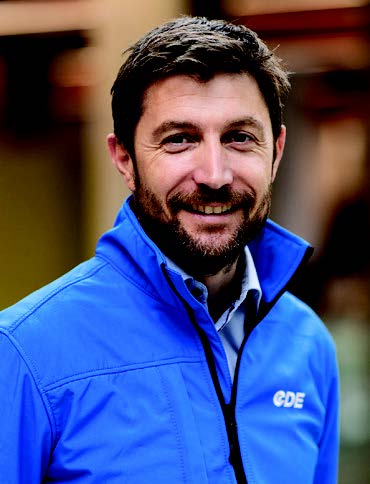
Darren Eastwood, business development director, CDE Group 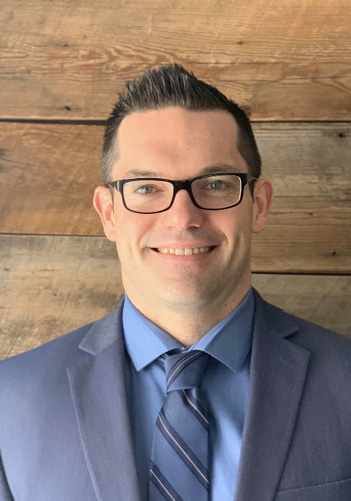
Ian Edwards, senior director – responsible for global sales, MAJOR 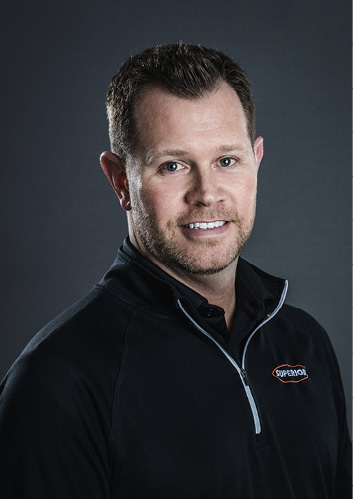
John Garrison, vice president of sales, Superior Industries 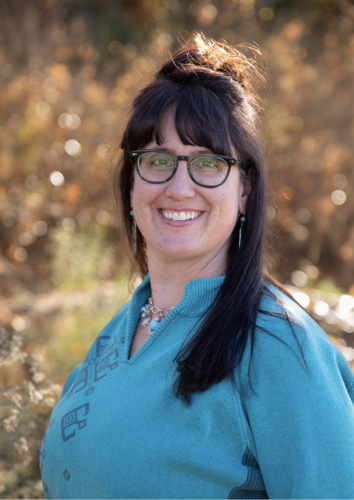
Jennifer Hise-Trujillo, president, CEMCO 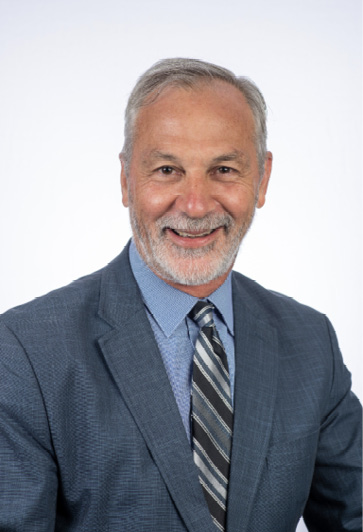
Mark Krause, managing director – North America, McLanahan 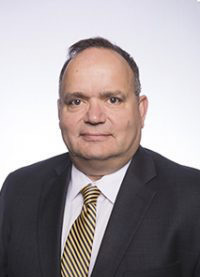
Alex Kanaris, president, VDG

Kristen Randall, marketing manager, Haver & Boecker Niagara 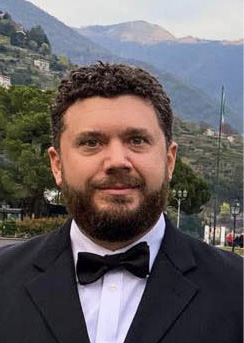
Chris Rhoades, vice president OTR, BKT 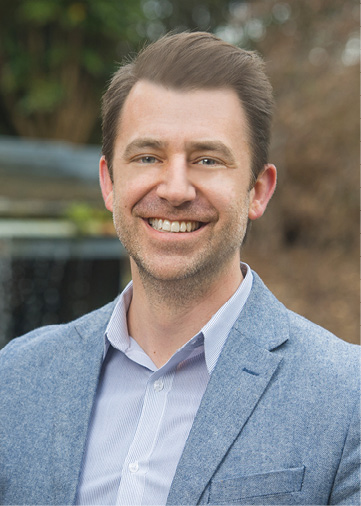
Trey Rollins, director of marketing & inside sales, Polydeck 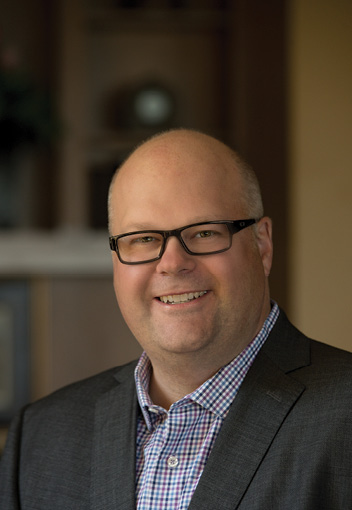
Josh Swank, vice president of sales and marketing, Philippi-Hagenbuch 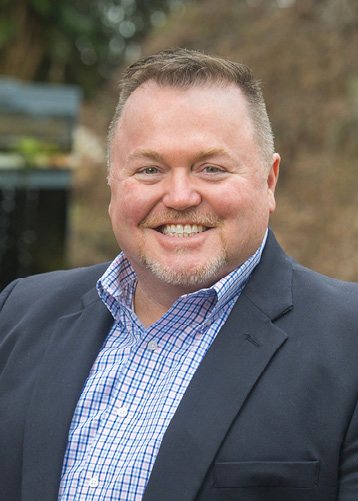
Joe Teague, vice president of sales and marketing, Polydeck 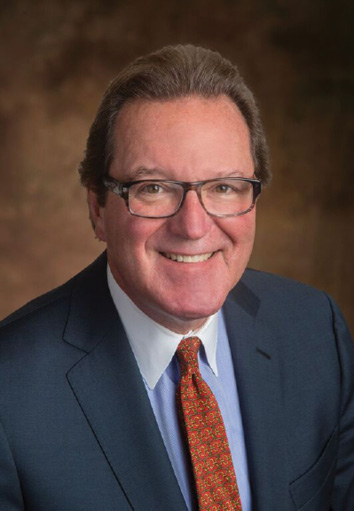
Pierre Villere, president and senior managing partner, Allen-Villere Partners
